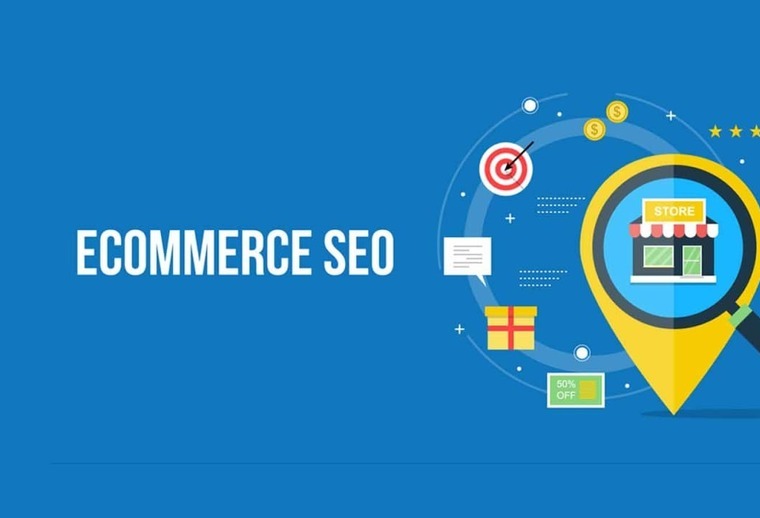
Search Engine Optimization (SEO) is an essential skill for any digital marketer or website owner. Mastering SEO involves understanding search engine algorithms, keyword research, content creation, and technical optimizations to enhance your website’s visibility and rank higher on search engine results pages (SERPs). In this comprehensive guide, we’ll delve into the essential lessons for boosting your website’s visibility and achieving SEO success.
Understanding Search Engine Algorithms
- Search engines like Google use complex algorithms to determine the relevance and authority of web pages. Here are the key components:
Crawling and Indexing
- Search engines use bots (crawlers) to scan web pages and index their content. Ensure your site is crawlable by using a clean, organized URL structure, creating a sitemap, and utilizing robots.txt files appropriately.
Ranking Factors
- Google’s algorithm considers over 200 factors when ranking pages. Key factors include content quality, relevance, user experience, and backlinks.
Best Practices:
- Use Google Search Console to monitor your site’s indexing status.
- Optimize your site’s architecture for easy navigation.

Keyword Research
Keyword research is the foundation of SEO. It involves identifying the terms and phrases that potential visitors use to find content related to your niche.
Steps for Effective Keyword Research:
- Brainstorming: Start with a list of broad topics relevant to your business.
- Tools and Techniques: Utilize tools like Google Keyword Planner, Ahrefs, SEMrush, and Moz to find keyword ideas, search volume, and competition.
- Long-Tail Keywords: Focus on long-tail keywords (three or more words) as they often have less competition and higher conversion rates.
- Competitor Analysis: Analyze competitors to identify their top-performing keywords.
Best Practices:
- Create a mix of short-tail and long-tail keywords.
- Focus on search intent to ensure the keywords match user queries.
On-Page SEO
On-page SEO involves optimizing individual web pages to rank higher and earn more relevant traffic.
Key Elements:
- Title Tags: Craft compelling, keyword-rich titles (under 60 characters) that accurately describe the content.
- Meta Descriptions: Write concise, engaging meta descriptions (under 160 characters) to improve click-through rates.
- Headings (H1, H2, H3): Use headings to structure your content and include keywords where appropriate.
- Content Optimization: Ensure your content is valuable, engaging, and optimized with keywords. Aim for a mix of text, images, and multimedia.
- URL Structure: Create clean, descriptive URLs that include keywords.
- Internal Linking: Use internal links to guide visitors to related content and distribute page authority.
Best Practices:
- Ensure all images have descriptive alt text.
- Optimize for mobile devices as a significant portion of traffic comes from mobile users.
Technical SEO
Technical SEO focuses on the backend of your website and server optimizations that help search engines crawl and index your site more effectively.

Key Areas:
- Site Speed: Improve page load times by compressing images, leveraging browser caching, and using Content Delivery Networks (CDNs).
- Mobile-Friendliness: Ensure your site is responsive and offers a seamless experience across all devices.
- SSL Certificate: Secure your site with HTTPS to build trust and improve rankings.
- Schema Markup: Implement structured data to help search engines understand your content and provide rich results.
Best Practices:
- Regularly audit your site using tools like Google PageSpeed Insights, GTmetrix, and Lighthouse.
- Fix crawl errors and broken links promptly.
Content Marketing
Content is king in SEO. High-quality, relevant content can drive traffic, engage visitors, and earn backlinks.
Content Strategies:
- Blogging: Regularly publish informative and engaging blog posts that address your audience’s pain points.
- Evergreen Content: Create timeless content that remains relevant and continues to attract traffic over time.
- Guest Blogging: Contribute to authoritative sites in your niche to build backlinks and increase your exposure.
- Content Upgrades: Offer downloadable resources (e.g., eBooks, guides) to collect email addresses and nurture leads.
Best Practices:
- Perform content audits to identify and update outdated content.
- Promote your content through social media and email marketing.
Link Building
Backlinks from authoritative sites signal to search engines that your content is valuable and trustworthy.
Link Building Techniques:
- Guest Posting: Write articles for other websites to earn backlinks.
- Broken Link Building: Identify broken links on other sites and offer your content as a replacement.
- Skyscraper Technique: Find popular content, create something better, and reach out to those who linked to the original.
- Influencer Outreach: Collaborate with influencers in your niche to gain exposure and backlinks.

Best Practices:
- Focus on quality over quantity; a few high-quality links are better than many low-quality ones.
- Avoid black-hat SEO practices like buying links, which can result in penalties.
User Experience (UX)
A positive user experience can significantly impact your SEO efforts. Search engines prioritize sites that offer a good user experience.
Key UX Factors:
- Navigation: Ensure your site is easy to navigate with a clear menu structure.
- Readability: Use legible fonts, appropriate text sizes, and sufficient white space.
- Engagement: Incorporate interactive elements like videos, infographics, and quizzes to keep users engaged.
- Accessibility: Make your site accessible to all users, including those with disabilities.
Best Practices:
- Use heatmaps and user behavior analytics to understand how visitors interact with your site.
- Continuously test and improve your site’s design and functionality.
Local SEO
For businesses with physical locations, local SEO is crucial for attracting nearby customers.
Local SEO Strategies:
- Google My Business: Claim and optimize your Google My Business listing with accurate information and photos.
- Local Citations: Ensure your business is listed consistently across local directories (e.g., Yelp, Yellow Pages).
- Local Keywords: Optimize your content for local search terms, including city and neighbourhood names.
- Reviews: Encourage satisfied customers to leave positive reviews on Google and other review sites.
Best Practices:
- Respond to customer reviews promptly and professionally.
- Create locally relevant content (e.g., blog posts about local events).
Analytics and Reporting
Measuring and analyzing your SEO efforts is vital for continuous improvement.
Tools for Analytics:
- Google Analytics: Track website traffic, user behavior, and conversion goals.
- Google Search Console: Monitor search performance, indexing status, and technical issues.
- SEO Tools: Use tools like Ahrefs, SEMrush, and Moz for comprehensive SEO analysis and insights.
Key Metrics:
- Organic Traffic: Monitor the number of visitors coming from search engines.
- Bounce Rate: Track the percentage of visitors who leave your site after viewing only one page.
- Conversion Rate: Measure the percentage of visitors who complete a desired action (e.g., filling out a form).
- Keyword Rankings: Monitor your ranking positions for target keywords.
Best Practices:
- Set up custom dashboards and reports to track your most important metrics.
- Conduct regular SEO audits to identify and fix issues.
Keeping Up with SEO Trends
SEO is a constantly evolving field. Staying updated with the latest trends and algorithm changes is crucial for maintaining and improving your rankings.
Staying Informed:
- Industry Blogs: Follow reputable SEO blogs (e.g., Moz, Search Engine Journal, Backlinko).
- Webinars and Conferences: Attend SEO webinars and conferences to learn from experts.
- Online Communities: Participate in SEO forums and social media groups to exchange knowledge and insights.
Best Practices:
- Regularly review and adjust your SEO strategy based on new information and trends.
- Experiment with new techniques and measure their impact.

Conclusion
Mastering SEO is a continuous process that requires dedication, patience, and a strategic approach. By understanding search engine algorithms, conducting thorough keyword research, optimizing on-page and technical aspects, creating high-quality content, building authoritative backlinks, enhancing user experience, and leveraging analytics, you can significantly boost your website’s visibility and achieve long-term success in search engine optimization.
Remember, SEO is not a one-time effort but an ongoing endeavor. Stay informed, be adaptable, and keep refining your strategies to stay ahead in the ever-changing digital landscape.



